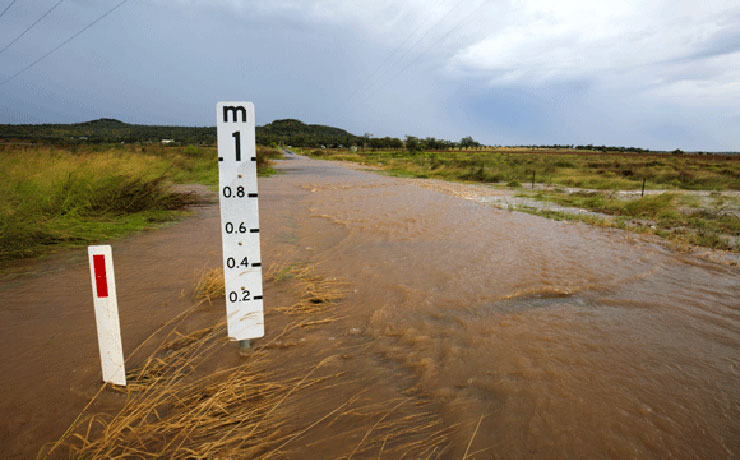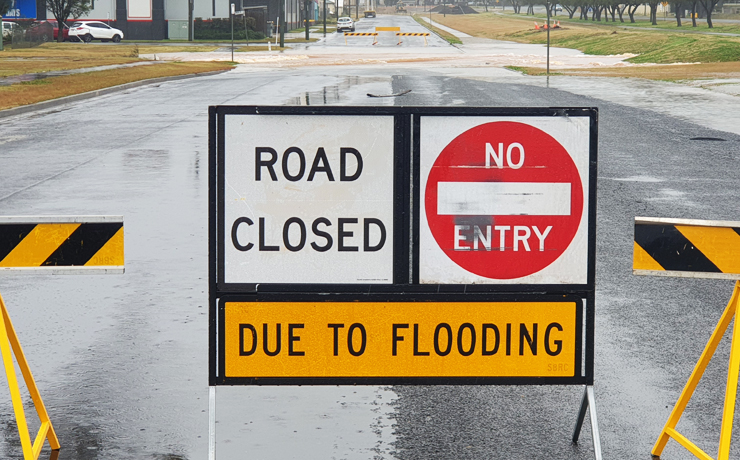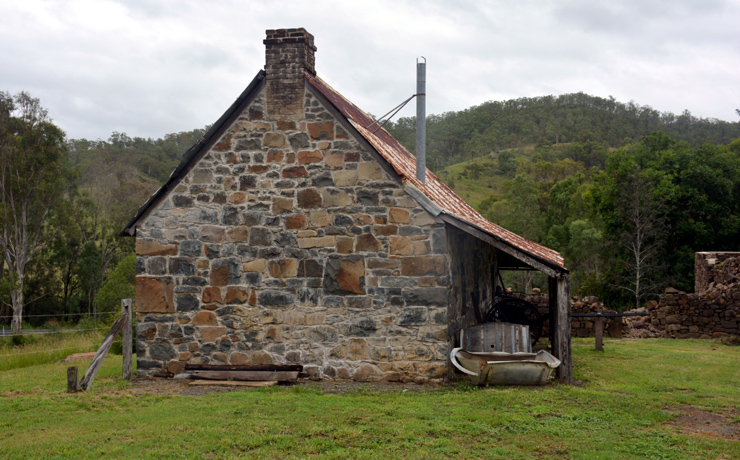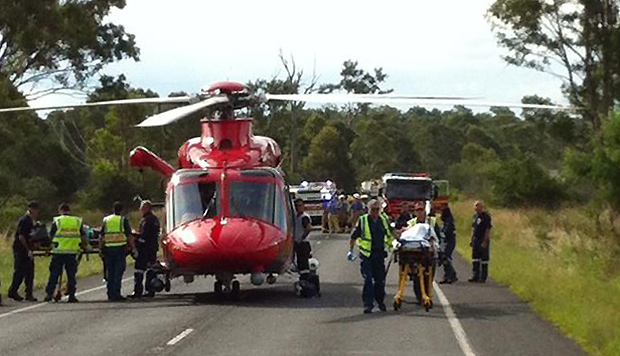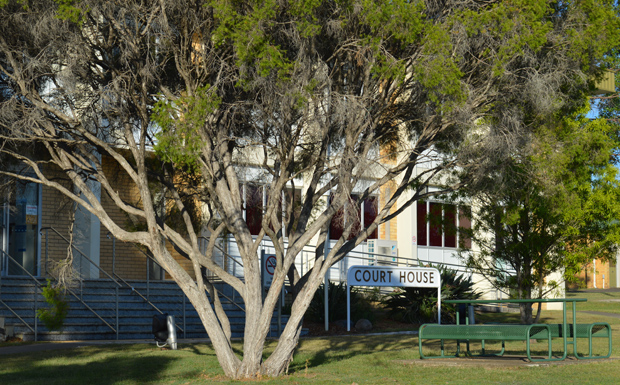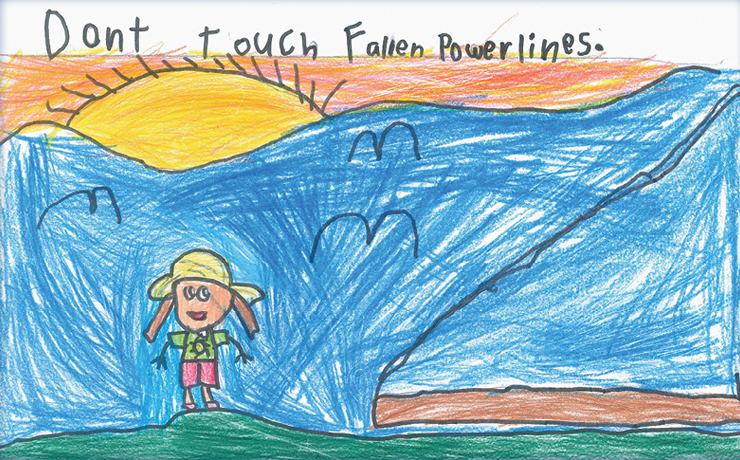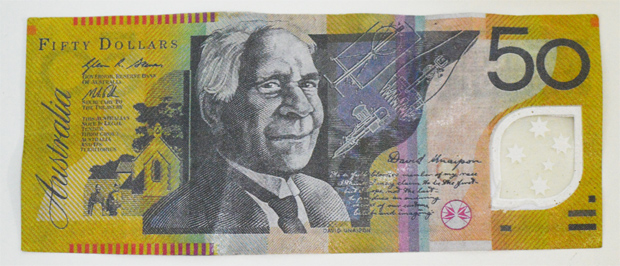
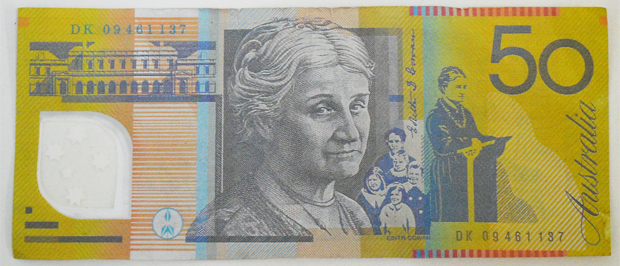
September 12, 2016
Police are warning South Burnett shopkeepers to be alert for counterfeit banknotes after two fake $50 bills were used at a store in Avoca Street, Kingaroy, on Sunday.
The two notes were discovered at the end of the day’s trading when an employee balanced the till.
The fake notes are slightly smaller than a genuine $50 note and have a waxy feel.
They each have the same serial number.
The counterfeiter has added a clear plastic window to each note but it is not embossed (see below).
Senior Constable Dan Walters said the notes could easily pass detection, particularly during a busy trading period.
Anyone who suspects they have received a counterfeit note, should contact Kingaroy Police on (07) 4160-4900 or Crime Stoppers on 1800-333-000.
* * *
Could You Spot A Counterfeit Banknote?
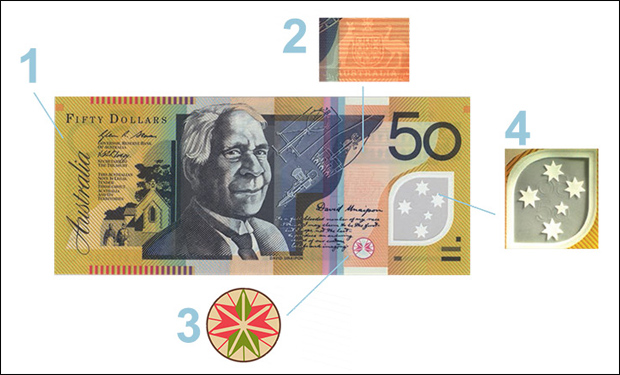
The Reserve Bank of Australia has published a guide to spotting fake banknotes:
1. Is it plastic? Australian banknotes are printed on plastic and have a distinct feel. A suspect banknote may feel excessively thick or thin compared to a genuine banknote. It is difficult to start a tear along the edge of a genuine banknote. You can also try scrunching the banknote in your hand – a genuine banknote should spring back.
2. Look for the Coat of Arms. If you hold the banknote to the light, you should see the Australian Coat of Arms.
3. Look for the Star. Diamond-shaped patterns are printed inside a circle on both sides of the banknote. If you hold the banknote up to the light, the patterns should line up perfectly to form a seven-pointed star.
4. Check the clear window. The clear window should be an integral part of the banknote and not an addition. Check that the white image printed on the window cannot be easily rubbed off. Also look for the embossing – there is a wave pattern in the window of the $10 banknote, and the value of the banknote in the windows of $20, $50 and $100 banknotes.
- Always check a range of features – don’t rely on only one or two.
- It can be useful to compare a suspect banknote with one you know is genuine and look for differences.
Other security features to check if you suspect a banknote might be counterfeit:
1. Feel the dark printing. It is produced with a special raised ink that can be felt with your finger.
2. Check the print quality. The background printing should be sharp. Check for irregularities such as less clearly defined patterns, thicker or thinner lines, or colour differences.
3. Look for microprinting. Under a magnifying glass you will see tiny, clearly defined words on the top left corner of the $5 banknote and near the portraits on the other banknotes.
4. Look at the banknote under UV light.
Common Myths
Myth: Banknotes without the printed name below the portrait are counterfeit.
Fact: A banknote without the name of the person below the portrait is not necessarily counterfeit. Printed names were added to Australian banknotes from 2002. This was done to help the public identify the people that our banknotes feature. To determine the year a banknote was produced, look at the first two numerals of the serial number e.g. 99 means the banknote was printed in 1999, while 03 means the banknote was printed in 2003.
Myth: The Governor’s signature is always above the Secretary to the Treasury’s.
Fact: The order of the signatures on Australian banknotes was changed in 2002. Since then, the Governor’s signature has been printed above that of the Secretary to the Treasury.












